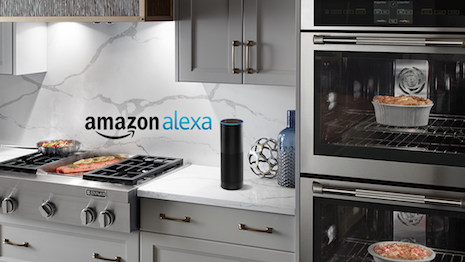- About
- Subscribe Now
- New York,
September 26, 2017

Consumers feel social responsibility is important in the brands they choose to do business with, as 66 percent of shoppers are willing to pay more to buy from socially responsible companies.
Social responsibility is important to consumers in today’s world in all aspects of business, which is revealed by Interbrand’s latest Best Global Brands 2017. The report shows that 74 percent of survey respondents showed that those who felt their work was meaningful were satisfied with their jobs.
"Hermès is the top growing luxury brand with an 11 percent increase in brand value, continuing a sustained trajectory of double-digit increase in value over the past three years," said Rebecca Robins is global director at Interbrand and co-author of Meta-luxury. "The brand has risen to #32 this year, with a value of $14.2bn, from #46 in 2014.
"Last year saw the first appearance of Dior into the Top 100 and the third brand within the LVMH portfolio, alongside Louis Vuitton and Moet et Chandon," she said. "Louis Vuitton (at #19) retains an extraordinary position for a global luxury brand, when you consider that the brand first entered the top 20 in 2007, while the past five years alone have seen the most seismic shifts at the top, in the dominance of the tech brands."
Global trends
Brands’ transparency and their impact on the world is highly important in all aspects of business. It has even been reflected in the stock market, where brands who make it clear they are making a positive impact on quality of life for the world outperform by 120 percent.
A strong sense of purpose is important with a company, with 82 percent of company associates and executives more confident with their companies when there is a strong sense of purpose.
Technology is becoming a vital component of business, especially with the Internet of Things on the rise. For instance, within this year, spending worldwide on IoT will rise 16.7 percent, hitting more than $1 billion.
 Jenn-Air's ovens now talk to Alexa. Image credit: Jenn-Air
Jenn-Air's ovens now talk to Alexa. Image credit: Jenn-Air
Voice assistance is becoming even more prevalent with a growth of 12 percent in the fourth quarter of 2016. More than 41 percent of adults use voice search everyday and more than half of teenagers in the United States.
The evolving definition of the connected consumer together with shifting behavior and expectations will shape the future of retail.
Walker Sands’ fourth annual “Future of Retail” report has uncovered three major trends that will spur changes to the current retail model as the industry faces mounting challenges. Walker Sands found that nearly half of surveyed consumers prefer to shop via digital channels, including mobile, desktop and voice-controlled devices, an increase of 48 percent from last year’s report (see more).
Technology trends
Virtual reality is another significant aspect in the retail and marketing industry today with hardware and software projected to grow to $40.4 billion by the year 2020.
 Virtual reality at LVMH's Luxury Lab during Viva Technology in 2016. Image credit: LVMH
Virtual reality at LVMH's Luxury Lab during Viva Technology in 2016. Image credit: LVMH
With every new technology, retailers are often the first to take the plunge, hoping to gain the upper hand in the cutthroat fight for consumer market share. Augmented reality and virtual reality are no different.
Retailers are jumping into augmented reality (AR) head first, hoping that the interactive medium can enhance their marketing mix (see more).
But with all this growth of technology, consumers are becoming more and more distracted. This is causing many to want to “unplug” and live device free.
One in five respondents are hoping to disconnect from screens and spend more time in the “real world.”
"We have seen a more exacerbated landscape of the luxury brands this year, both in value and rank, across the top 100, with growth stories at Gucci and Hermès, in counterpoint to dips in brand value at both Burberry (down 4 percent) and Prada (down 14 percent)," Ms. Robins said. "And as the entry point for a brand to make the top 100 hits $4 billion plus in brand value, Ralph Lauren dips out of the report this year.
"Retail is the top growing sector in the study this year, which has been helped substantially by one of the top growing brands, Amazon, who broke into the top 10 just two years ago and has now breached the top 5, with a 29 percent increase in brand value," she said.
Share your thoughts. Click here
I would love to know what this means exactly in terms of the number you are quoting. Is it 120% or 20%? And the percentage is of what? I need some clarification, as I would like to use this statistic in a presentation.
“Brands’ transparency and their impact on the world is highly important in all aspects of business. It has even been reflected in the stock market, where brands who make it clear they are making a positive impact on quality of life for the world outperform by 120 percent.”
Thank you.
Tanya Pushkine